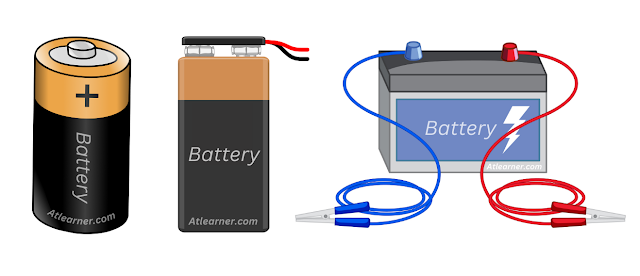What is a Battery?
Batteries are an essential component of modern life, powering everything from our smartphones and laptops to electric vehicles and renewable energy systems. A battery is a device that converts chemical energy into electrical energy and stores it for later use. There are many different types of batteries, each with its own strengths and limitations.
The most common type of battery is the lithium-ion battery, which is used in most portable electronic devices. These batteries are lightweight and have a high energy density, meaning they can store a lot of energy in a small space. They also have a long lifespan and can be recharged many times before needing to be replaced.
Another type of battery is the lead-acid battery, which is used in automobiles and other vehicles. These batteries are heavier and have a lower energy density than lithium-ion batteries, but they are much cheaper and have a longer lifespan. They are also more durable and can withstand harsh conditions, making them ideal for use in vehicles.
A newer type of battery that is becoming increasingly popular is the solid-state battery. These batteries use a solid electrolyte instead of a liquid electrolyte, which makes them safer and more durable than traditional batteries. They also have a higher energy density than lithium-ion batteries, making them ideal for use in electric vehicles and renewable energy systems.
How Battery Works?
Batteries work by converting chemical energy into electrical energy through a process called the electrochemical reaction. A battery is made up of one or more cells, each containing a positive and negative electrode immersed in a chemical solution called the electrolyte solution.
The positive electrode is typically made of a metal oxide, while the negative electrode is made of a metal such as zinc or lithium. The electrolyte solution allows charged particles, called ions, to flow between the electrodes and complete the electrochemical reaction.
When a battery is connected to an external circuit, such as a device or a vehicle, a chemical reaction occurs between the positive and negative electrodes. This reaction releases electrons, which flow through the external circuit, producing electrical energy.
Over time, the chemical reaction depletes the energy stored in the battery, and the battery needs to be recharged or replaced. Recharging a battery involves reversing the chemical reaction that occurs during discharge by applying an external electrical current. This allows the battery to store energy again and be used repeatedly.
The amount of energy a battery can store is determined by its capacity, which is measured in ampere-hours (Ah) or watt-hours (Wh). A higher-capacity battery can store more energy and last longer than a lower-capacity battery.
Different types of batteries use different materials and chemical reactions to store and release energy. For example, lithium-ion batteries are widely used in portable electronic devices because they have a high energy density and long lifespan. Lead-acid batteries are used in vehicles and backup power systems because they are durable and can provide high power output.
Application of Batteries
Batteries have many important applications, and their use is only expected to grow in the coming years. As renewable energy systems become more prevalent, batteries will be essential for storing and distributing the energy generated by solar panels and wind turbines. They will also be key in the development of electric vehicles, which are expected to replace traditional gasoline-powered vehicles in the coming decades.
One of the challenges facing battery technology is improving its energy density and reducing its cost. While lithium-ion batteries have a high energy density, they are still relatively expensive to manufacture, which limits their use in large-scale applications. There is also concern about the environmental impact of battery production and disposal, as many batteries contain toxic materials that can be harmful to the environment if not properly disposed of.
Despite these challenges, there is a lot of excitement about the potential of batteries to transform the way we live and work. They are a key component of the shift towards renewable energy and the development of electric vehicles, and they have the potential to revolutionize many industries in the coming years. As research and development in battery technology continue to advance, we can expect to see even more innovative and efficient battery systems in the future.
Continue Reading...


Post a Comment (0)